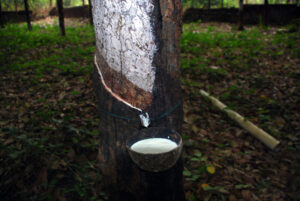India’s rubber industry stands as a pivotal player in the global economy, contributing significantly to various sectors and driving economic growth domestically and internationally. From automotive to agriculture, KPM rubber products play a crucial role in diverse industries worldwide. In this article, we delve into the economic significance of India’s rubber industry on a global scale.

Historical Evolution
The roots of India’s rubber industry trace back to the early 20th century when commercial cultivation began in Kerala. Spanning across Tamil Nadu, Karnataka, and other states, the industry gradually expanded its footprint. Over the decades, the industry witnessed substantial growth, propelled by advancements in technology and infrastructure. Today, India stands as the world’s third largest producer and fourth largest consumer of natural rubber, showcasing its remarkable journey of development.
Contribution to Global Supply Chains
India’s rubber industry plays a crucial role in global supply chains, supplying raw materials to various sectors such as automotive, construction, and healthcare. The country’s vast rubber plantations ensure a steady supply of natural rubber, essential for manufacturing tires, rubber products, and latex goods worldwide. This contribution fosters international trade and economic cooperation, benefiting both producers and consumers globally.
Employment Generation
The rubber industry in India is a significant source of employment, providing livelihoods to millions across the nation. From small-scale rubber farmers to skilled technicians in manufacturing units, the industry offers diverse job opportunities, thus driving socio-economic development. This employment ripple effect fosters economic stability and improves living standards, particularly in rural areas where rubber cultivation is prevalent.
Global Trade Dynamics
India’s rubber industry boasts a robust export market, supplying raw materials, finished products, and expertise worldwide. With an extensive network of manufacturers and suppliers, India caters to the global demand for rubber based products, ranging from tires to industrial components. The export revenue generated by the Indian rubber industry strengthens the country’s foreign exchange reserves and contributes to a favorable balance of trade.
Technological Advancements
India’s rubber industry continually invests in research and development to enhance productivity, quality, and sustainability. Technological innovations in rubber processing, material science, and product engineering not only benefit domestic operations but also elevate India’s standing in the global market. By embracing automation, eco-friendly practices, and cutting-edge technologies, the industry sets new benchmarks for efficiency and competitiveness.
Conclusion
India’s rubber industry stands as a dynamic force shaping the global economic landscape. From powering industrial growth to driving innovation and sustainability, the sector’s impact resonates across continents and industries. As India continues to emerge as a global economic powerhouse, its rubber industry remains a beacon of growth, resilience, and opportunity in an interconnected world.
For More Rubber Product Information Visit Us: https://kpmrubber.com/

About The Author: KPM Team
More posts by KPM Team